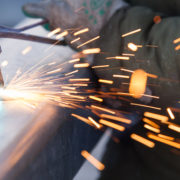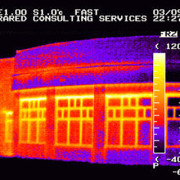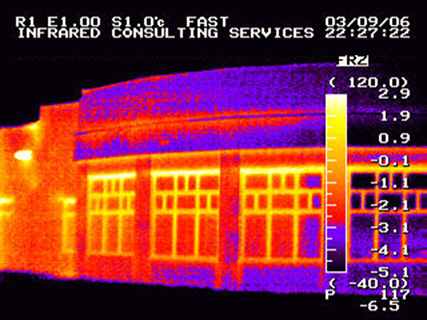Can Infrared Testing Reveal as Much as Cutting into a Pipe?
When you can see condensation or feel heat on a pipe, you know something may be wrong inside of it. Cutting into that pipe to discover a potential problem, though, is a serious and costly step. Infrared testing may be a better choice.
Even where no obvious signs of temperature disturbances are visible, problems may still exist under the surface. In situations like this, IR cameras and trained thermographers are invaluable. All objects radiate IR energy, which an IR camera can “see.” The thermographer reads the thermal radiation patterns to determine the condition of a pipe or other material vital to your business.
Doing this right takes a highly-trained thermographer because of thermal reflectivity. Some of the radiation being emitted from the pipe or other components won’t have anything to do with true surface temperature. Thermographers go through extensive training to learn how to identify, understand, evaluate and control this reflective energy. Thermography also requires deep knowledge of physics and environmental factors that influence surface temperatures.
Thermography has two big advantages or other NDT (nondestructive testing) tech:
- Speed – thermography is almost instantaneous
- In-situ inspection – large areas or a vast number of objects can be tested in a short period of time
Other advantages include:
- Environmentally friendly
- No destruction of what’s being examined
- Major savings in employee compensation, downtime and machinery costs
- Can be done day or night
Contact at (888) 925-4404 or via our online form to talk about inspecting your pipes – and saving you money.



 Infrared Consulting Services Inc. (ICS) is an independent leading thermal imaging survey and services firm all over the world.
Infrared Consulting Services Inc. (ICS) is an independent leading thermal imaging survey and services firm all over the world. By detecting problems before they occur and by pin-pointing exactly where problems might exist, Infrared Thermographic Testing has many benefits.
By detecting problems before they occur and by pin-pointing exactly where problems might exist, Infrared Thermographic Testing has many benefits.
 Learn more about our wide range of non-invasive, non-destructive inspection & testing services and if they are right for your needs.
Learn more about our wide range of non-invasive, non-destructive inspection & testing services and if they are right for your needs.
 Founded in 1988, Infrared Consulting Services (ICS) provides professional infrared electrical, NDT and building envelope inspection services nationwide.
Founded in 1988, Infrared Consulting Services (ICS) provides professional infrared electrical, NDT and building envelope inspection services nationwide.